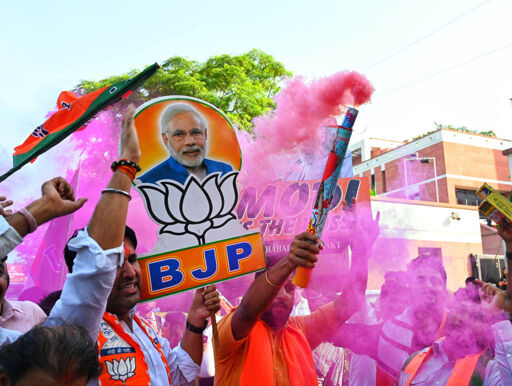I noticed some years ago that the new far right was obsessed with fantasy scenarios of imaginary and extreme evil. FEMA death camps, “great replacement theory,” the “Great Reset,” fifteen-minute cities, 5G towers being beacons of mind control, and microchips installed in people through vaccines. In India, they have this theory called the Romeo jihad: that Muslim men are seducing Hindu girls and converting them to Islam, thus waging a sort of demographic war. Or take QAnon’s fantasies of satanist, communist pedophiles running the world. They are really enthralled and obsessed by hallucinatory scenarios of extreme disaster.
Why do they go for this mass apocalyptic fantasy? Because it processes disaster in a way that is actually quite enlivening. Most of the time, when people go through disasters, it results in depression and withdrawing a bit from life and the public sphere. But the far right offers you a different way out. It says “those demons in your head that you’ve been wrestling with, they’re actually real and you can kill them. The problem is not anything difficult, or abstract or systemic, it’s just bad people, and we’re going to get them.” It takes all the difficult emotions that people deal with in the face of economic shocks and climate change and gives them an outlet that feels valid and validating.
So that’s what I call disaster nationalism. It’s not yet fascist because although it organizes people’s desires and emotions in a very reactionary direction, they’re not trying to overthrow parliamentary democracy, they’re not trying to crush and extirpate every last human and civil right — yet. They also lack the organizational and ideological maturity. We’re in a stage of accumulation of fascist force. When you go back to the interwar period, that accumulation process had already taken place, there had already been massive pogroms, there had been big far-right movements before fascism. And so, we are in an early stage of the inchoate fascism that I see developing here.



